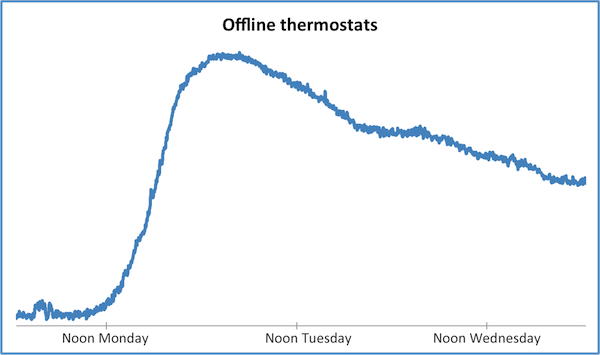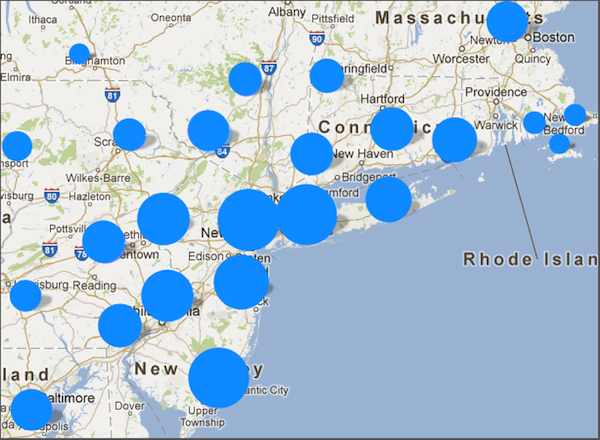
Laura Kier
November 6, 2012
Last week, Superstorm Sandy impacted millions of people on the East Coast. EnergyHub, based in Brooklyn, NY, was no exception. Thankfully, our team and office came through the storm safe and mostly dry. The team has pulled together both professionally and in our communities, from one engineer who walked three hours across multiple boroughs so she could come to work, to another team member, a volunteer firefighter in New Jersey, who has been responding to storm-related emergencies since last Monday.
As Sandy started to come ashore, we noticed that a large number of thermostats in affected areas stopped talking to our servers. Of course this is not surprising since telephone, internet, and electrical service was disrupted for millions of homes and businesses. You can see the magnitude of Sandy’s impact in this graph:

The first step was to pull a snapshot of the offline thermostats and summarize it for all affected ZIP Codes. The summarized (anonymous) data was then geocoded and mapped. Here’s what the resulting map looks like (bigger circles means more thermostats offline):

The map lines up very closely with areas impacted by Sandy. As you can see from the first (“Offline thermostats”) chart, we’re already seeing many of those thermostats automatically reconnecting to our servers, meaning power and internet infrastructure has been restored for those folks!
As the number of internet-connected devices continues to grow, these types of monitoring tools will be able to provide a clearer picture of the impact of natural disasters like Sandy. The resulting data can be used for many other productive purposes, including strengthening our energy grids, monitoring critical resources, and managing distributed infrastructure.
As our region works hard to get back to normal, EnergyHub wishes a speedy recovery to all those affected by Superstorm Sandy. If you have any thoughts or questions on this blog post email us at: ilovedata@energyhub.com.
Interested in keeping up with the latest dispatch from the grid edge?
Get our next post in your inbox.


